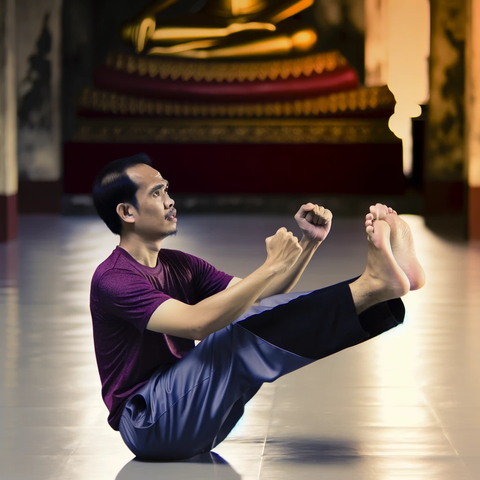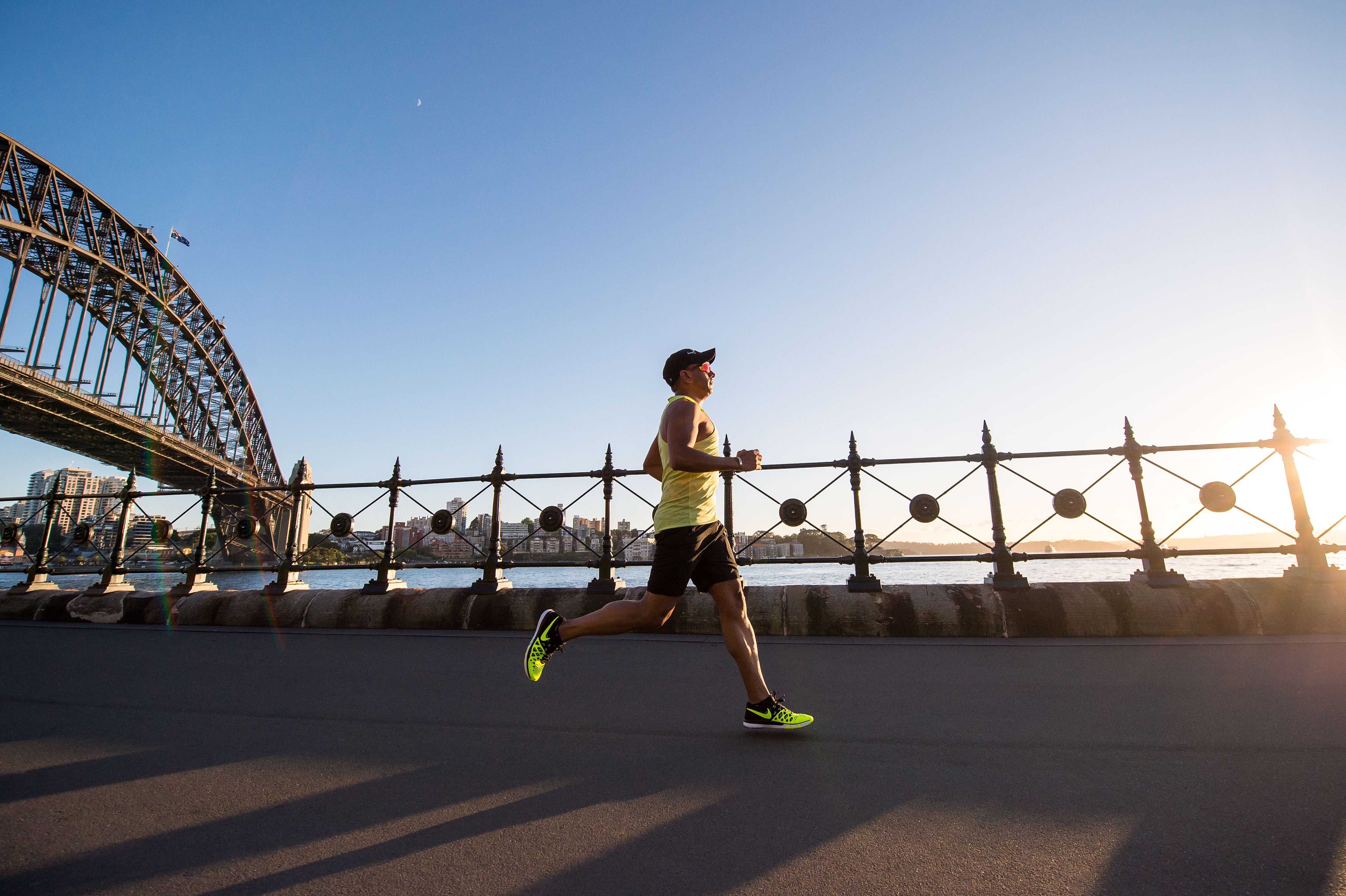Contents (Jump to a section)
How to Stretch Shin Splints: Stretching Tips & Other Techniques for Relief

- What are Shin Splints?
- Does Stretching Help Shin Splints?
- Should You Stretch Shin Splints?
- Can You Learn How to Stretch to Prevent Shin Splints, Too?
- How to Stretch Shin Splints: What is the Best Stretch for Shin Splints?
- Other Ways to Relieve Shin Splints Besides Stretching
- Final Thoughts on How to Stretch Shin Splints
Suffering from shin splints can be extremely disheartening. They can affect your daily life as the aching pain intensifies to make walking difficult, stilted, and excruciating.
The shins, or tibia, are the second longest bone in the body. They are responsible for providing structure and support while standing and walking. When the shins are placed under too much strain, shin splints result, causing incredible discomfort and hindrance in daily movements.
The good news? You can learn how to stretch shin splints to find relief fast!
Knowing how to stretch shin splints can help alleviate any discomfort or pain from the injury, which is why we’ll be going over shin splints stretching in this article. In addition, the best stretch for shin splints can be used as a preventative measure to avoid shin splints caused by intense or new physical activities.
First - a brief introduction to the condition for those who are just experiencing it for the first time.
What are Shin Splints?
Shin splints, also called medial tibial stress syndrome, are acute pain sourced at the shin and lower leg. The pain results from inflammation of the bone tissue, tendons, and muscles around the tibia.
Symptoms of Shin Splints
The most common symptom of shin splints is pain on the outside and front of the shin. The area can become tender to the touch. For some, the pain can begin above the ankle on the inside of the lower leg.
Symptoms of pain can become worse when standing on the toes, walking, running, or rolling the ankle inward. For example, shin splint pain is often aching or dull.
What Causes Shin Splints?
Shin splints frequently occur after repetitive or intense exercise and, more notably, when first exercising with a new pair of shoes. The stress placed on the shinbone causes the connective tissue that supports and attaches the muscle to the bone to become strained and inflamed.
Wearing unsupportive shoes can also cause shin splints. This is because the foot is not provided with ample support or cushioning, resulting in stress to the ankle and leg.
Running or hiking on uneven terrain can place stress on the shins due to the legs and feet frequently having to readjust. The same goes for having tight calf muscles, which puts extra pressure on the shins.
Warming up and cooling down when exercising is crucial to avoiding tight calves and muscles in the legs to prevent shin splints. Learning how to stretch out shin splints, fix a tight hamstring, increase hip mobility, increase ankle mobility, and how to release tight calves is hugely beneficial in avoiding injuries such as shin splints.
Does Stretching Help Shin Splints?
So, does stretching help shin splints? Yes!
Shin splints stretching is an effective method of alleviating symptoms associated with shin splints. In addition, stretching shin splints can prevent the risk of further, more severe injuries, like stress fractures.
Should You Stretch Shin Splints?
Should you stretch shin splints? You should! Stretching the shin splints can help relieve pain, but if stretching the shin splints is too painful, stop. If you suspect that there may be a more severe injury involved, like a stress fracture, then avoid stretching and seek out treatment from a medical professional.
Can You Learn How to Stretch to Prevent Shin Splints, Too?
You know now that you can use shin splint stretching as a means of recovery - but should be proactive in stretching as well? Should learn how to stretch to prevent shin splints?
Of course! Stretching to avoid shin splints can prevent suffering from aching and dull pain, lower the risk of a stress fracture, and reduce the risk of further injury. After all, an ounce of prevention is worth a pound of cure!
How to Stretch Shin Splints: What is the Best Stretch for Shin Splints?
If you’re looking for the best stretch for shin splints, you’ve come to the right place! Stretching to avoid shin splints can not only prevent them but also help alleviate pain from existing shin splints. In addition, using shin splints stretching to warm up and cool down before and after exercising is crucial to eliminating the potential of suffering from shin splints.
Of course, flexibility and mobility are essential in reducing the stress placed on the shins. But how long does it take to get flexible or see progress? With consistency, improvement can be seen within a few weeks of stretching, so don’t give up and keep stretching the legs to prevent shin splints!
Soleus Calf Stretch (Against The Wall)

The soleus muscle of the calf is responsible for movements such as walking and running. It supports balance in the body, preventing it from falling forward.
With this soleus calf stretch, you only need a space along a wall. Standing straight, rest your forefoot against the wall. Move the heel as close as possible, keeping the heel on the floor. You should begin to feel a stretch in the calf. For a deeper stretch, lean forward to place more body weight into the stretch. Hold this position for 20-30 seconds.
Foam Rolling

Helping to release tension, boost circulation, and reduce inflammation, foam rolling can prevent shin splints and help alleviate pain.
For this stretching exercise, begin in a tabletop position on hands and knees. Place the foam roller underneath you. Carefully place your right knee, then left, onto the foam roller, using your hands on the floor for balance. Then, slowly roll up and down the shins using your hands and hips. Roll for 20-30 seconds.
If balance is an issue during this stretch, keep one leg on the floor. Switch sides after time is up to roll out both shins.
Seated Gastrocnemius Calf Stretch

The gastrocnemius muscle is found at the back of the calf. It begins above the knee, then splits into two strips of muscle that travel down to attach to the Achilles tendon, which connects to the heel of the foot. When the gastrocnemius muscle is tight, it can affect ankle mobility and strain the leg to cause shin splints.
The gastrocnemius calf stretch can be performed standing or seated.
In a seated position, grab a band and loop it around the ball of the foot (on the leg with the shin splint). Tauten the band to begin placing tension. Keep the knee straight. You should feel the calf muscles stretch. Hold for 20 seconds. Repeat 3-5 times.
Toe Taps

This dynamic stretch is an excellent warm-up for the shin muscles. By tapping your toes on the floor, you engage the muscles around the shin, preparing them for more intensive stretches. It helps increase blood flow to the area, promoting flexibility and reducing the risk of injury during physical activity.
Towel Stretch

The towel stretch is effective for targeting the calf muscles, which play a significant role in shin splints. By looping a towel around the ball of your foot and gently pulling it towards you, you stretch the gastrocnemius and soleus muscles.This stretch aids in improving the flexibility of the calf muscles, reducing tension on the shin.
Tibialis Anterior Stretch

Sitting on your heels and lifting your knees targets the tibialis anterior, the muscle responsible for dorsiflexion. This stretch is beneficial for those with shin splints on the front part of the shin. It aids in releasing tension and promoting flexibility in the tibialis anterior.
Intrinsic Muscle Stretch

Sitting with legs crossed and pulling your toes upward targets the small intrinsic muscles around the shin.This stretch enhances flexibility in the intricate muscles of the shin. It complements other stretches by addressing smaller muscle groups that may contribute to shin splint discomfort.
Ankle Alphabet

This exercise focuses on ankle mobility, which is crucial for preventing shin splints.
By moving your ankle in the shape of each letter of the alphabet, you engage the muscles surrounding the shin. Improved ankle flexibility reduces stress on the shin during activities like running or jumping.
How to Stretch Out Shin Splints: General Advice on Stretching Shin Splints
To achieve deeper stretching to prevent or recover from shin splints, CastleFlexx’s flexibility equipment is the tool you need!
Designed to promote access to assisted stretching, this versatile tool encourages broader ranges of movement and deeper stretching to target the muscles and fascia. Of course, assisted stretching uses the help of a second person to achieve these deeper stretches. Still, CastleFlexx’s flexibility equipment allows you to grasp the benefits of assisted stretching, like reduced stress and tension relief, without needing another person!
Our high-quality tool can also be used for fascial stretch therapy. So, what is fascial stretch therapy? Fascial stretch therapy is a form of table-based assisted stretching that targets the fascia and joint capsules, which provide support and structure to the body. When these are tight and inflamed, it can cause painful symptoms and strain the rest of the body, resulting in the possibility of shin splints.
Other Ways to Relieve Shin Splints Besides Stretching
Rest is critical when relieving shin splints. Giving the injury time to heal encourages the healing progress to move smoothly. Hindering healing by continuing to exercise will not help shin splints heal and can result in a severe stress fracture.
Cold therapy, also known as cryotherapy, is another effective maneuver to relieve shin splints besides stretching. This therapy is beneficial in decreasing inflammation, reducing swelling, and relieving pain. Depending on the severity of the shin splints, ice the area 4-8 times a day for 15-20 minutes. Protect the skin when applying cold therapy by wrapping the ice packs in a thin towel.
Final Thoughts on How to Stretch Shin Splints
Shin splints stretching is crucial to avoiding aching or dull pain caused by this injury that can hinder everyday movements such as walking.
CastleFlexx’s assisted stretching-based equipment can do wonders in helping alleviate pain from shin splints. It can also be useful in warming up and cooling down the legs before and after exercising to prevent any excess strain on the shins caused by tightness or poor mobility in the calves, hamstrings, hips, and ankles.
Get the best stretch for shin splints with CastleFlexx’s flexibility equipment!
